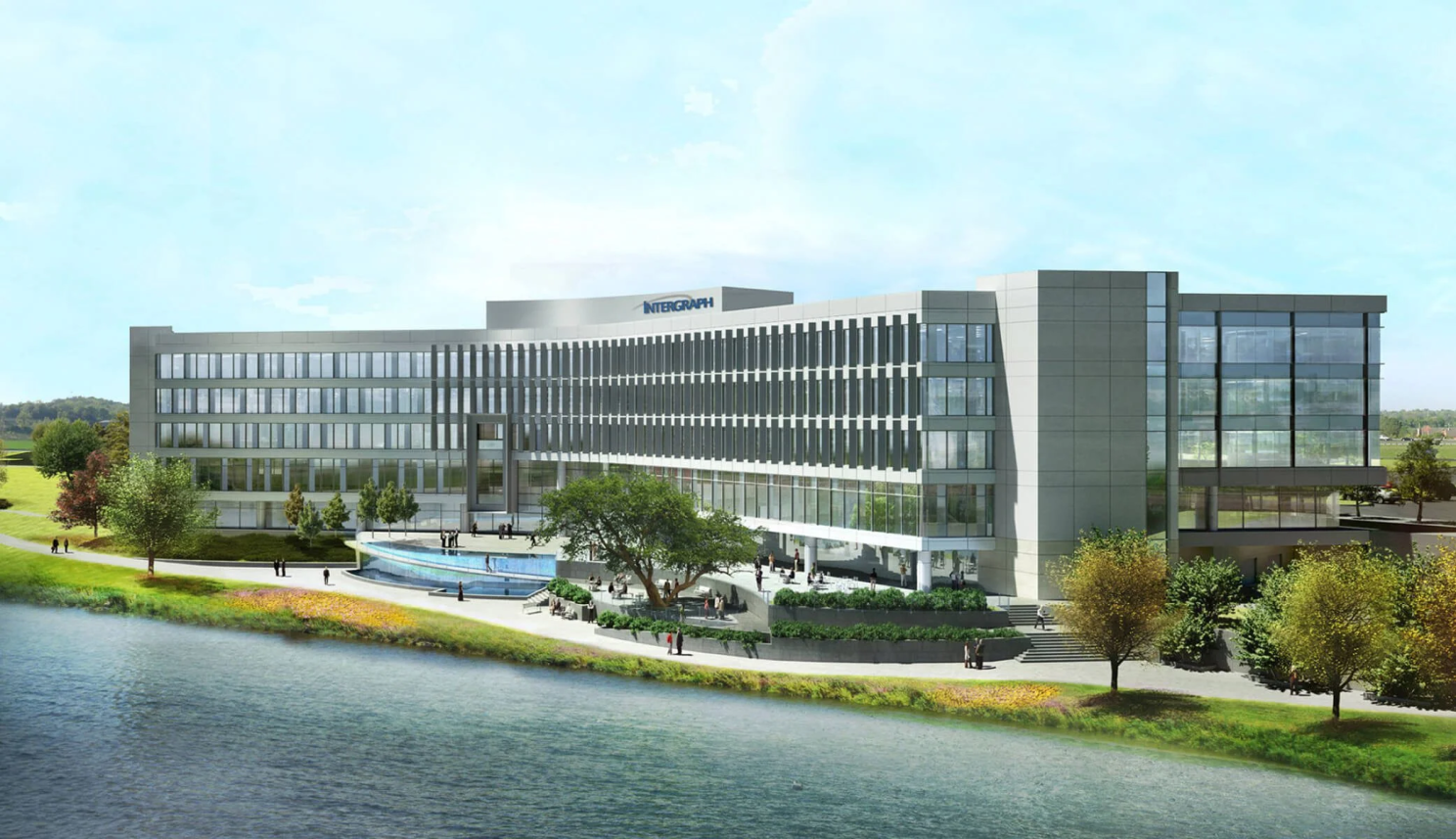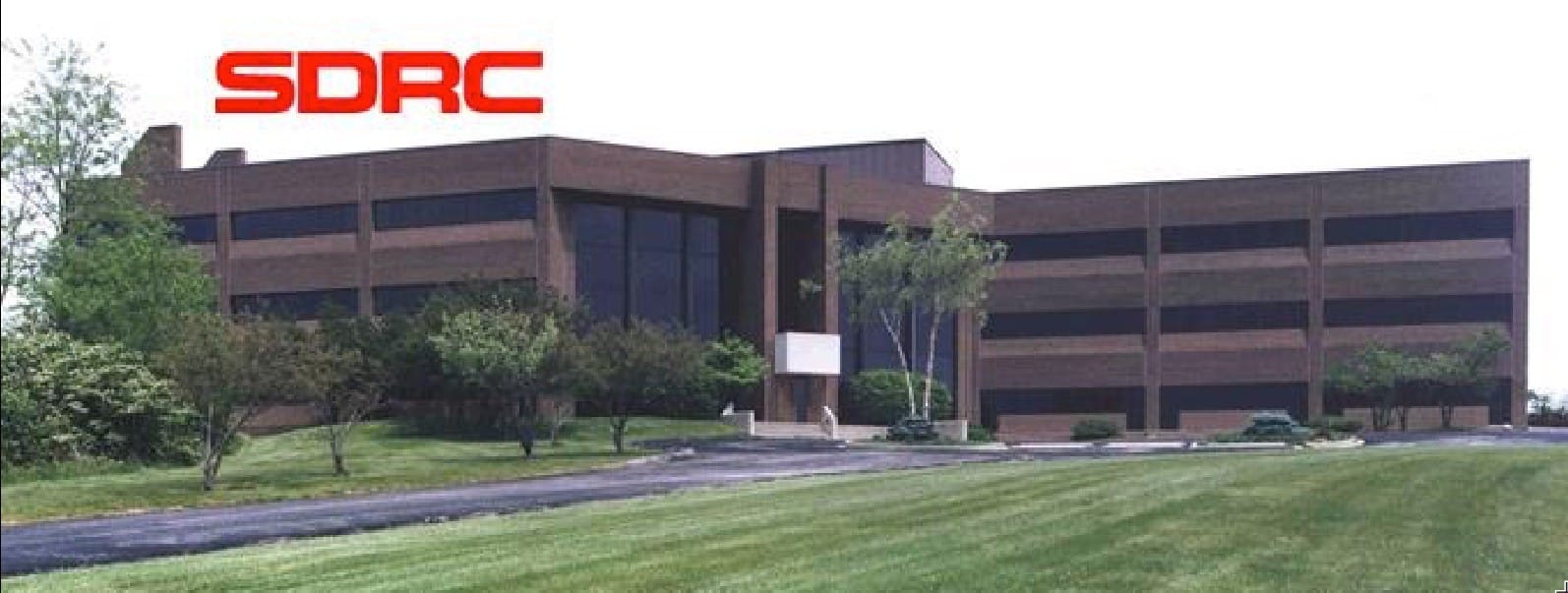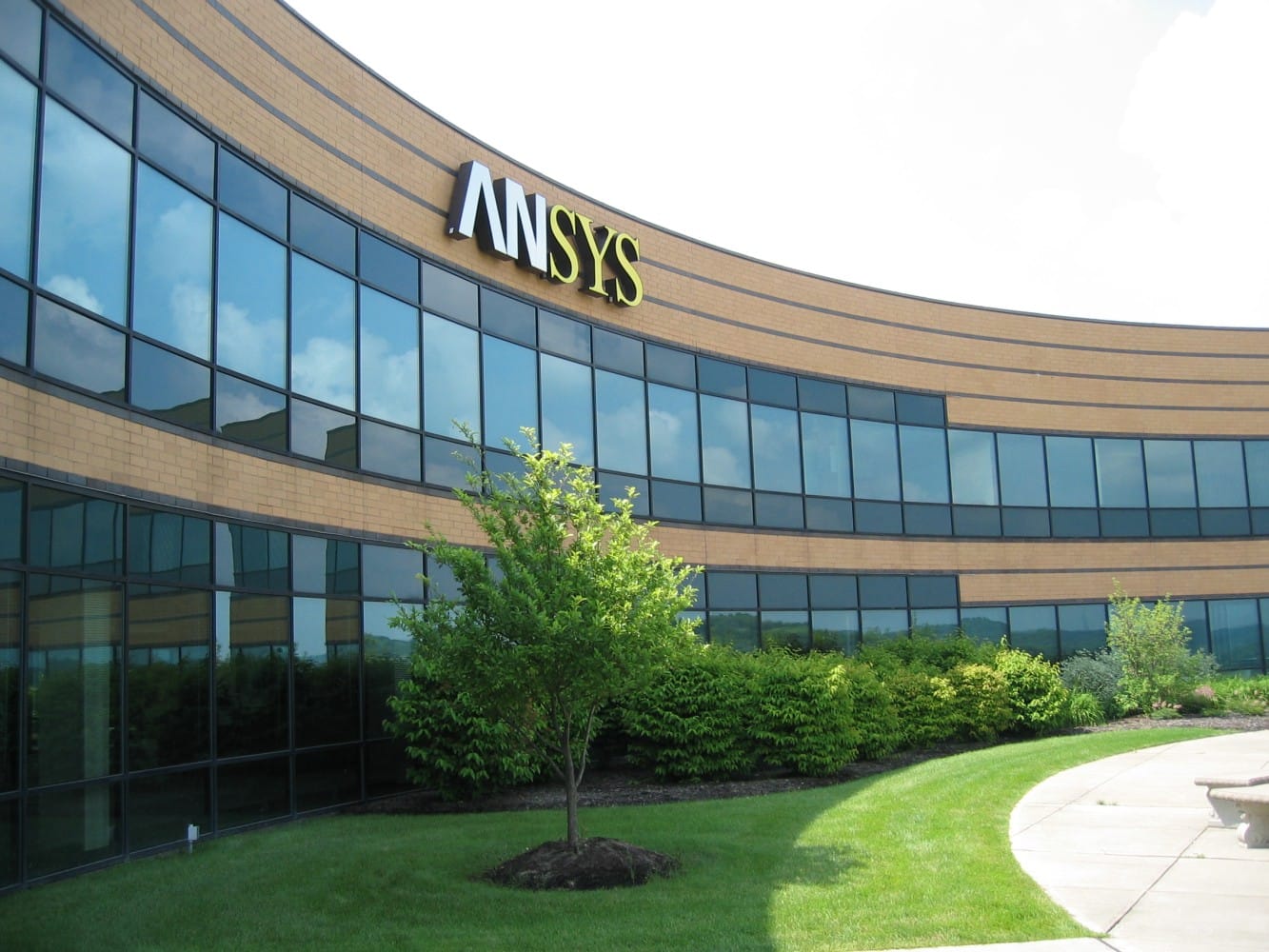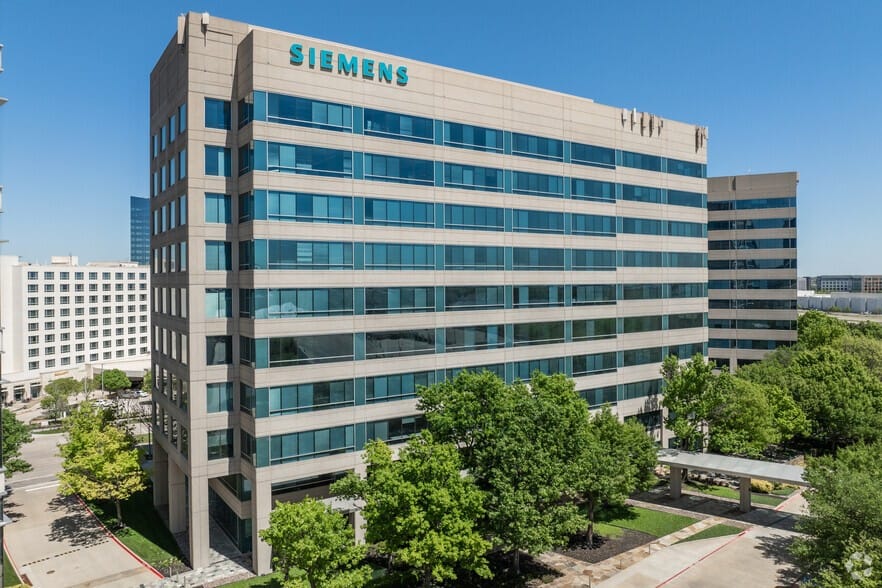Between the Coasts: The Untold Story: How America's Heartland Shaped CAD and PLM Evolution

This is the second of an ongoing series of articles about the history of PLM. It started with this article about Boston's particular role in the origins of the industry: https://www.linkedin.com/pulse/bostons-hidden-legacy-how-128-tech-corridor-became-finocchiaro-idzte/.
When discussing the evolution of Computer-Aided Design (CAD) and Product Lifecycle Management (PLM) technologies, attention often gravitates toward the innovation hubs of Silicon Valley and Boston's Route 128 corridor. However, this narrative overlooks a significant chapter in the digital engineering revolution: the profound contributions from America's heartland.
The central United States—spanning from the Great Lakes to the Gulf Coast and from the Appalachians to the Rockies—has been home to pioneering companies and visionaries who fundamentally transformed how products are designed, engineered, and manufactured. This article explores these often-overlooked contributions and the remarkable individuals behind them.
The Birth of Interactive Design in Alabama's Rocket City

In the shadow of NASA's Marshall Space Flight Center, Huntsville, Alabama became an unlikely epicenter for CAD innovation with the founding of M&S Computing in 1969 (later renamed Intergraph). Founded by Jim Meadlock and four other former IBM employees who had worked on NASA projects, the company pioneered interactive graphics technology at a time when most computing still relied on punch cards and batch processing.
Intergraph developed some of the first truly interactive CAD systems, allowing engineers to visualize and manipulate designs in real time—a revolutionary concept in an era when most computer output came in the form of printed reports. By the late 1970s, Intergraph had established itself as a leader in plant design software, creating specialized applications for industries ranging from petrochemical processing to power generation.
Dan Staples, Vice President of Mainstream Engineering at Siemens Digital Industries Software, reflected on those early days:
"Not many people realize that Huntsville has the most engineers per capita of any city in the US. You walk out of the airport and immediately see signs for Lockheed Martin, Boeing, etc. Intergraph started plotting rocket trajectories for U.S. government and evolved from there."
Jim Meadlock’s vision extended beyond just visualization. He recognized early on that managing the relationships between components was as important as the components themselves—a foundational concept for today’s PLM systems. By 1980, Intergraph had implemented early database systems to track design components and their relationships, foreshadowing modern PLM approaches.
The company’s influence expanded throughout the 1980s and 1990s, with its solutions becoming industry standards in GIS (Geographic Information Systems), AEC (Architecture, Engineering, and Construction), and process plant design. In 1996, Intergraph released Solid Edge to compete with SolidWorks and Autodesk Mechanical Desktop. Dan Staples recounted:
"We pioneered 3D graphics for the old DEC VAX machines by adding specialized hardware and software. It was wildly successful and Intergraph was growing at a phenomenal rate. Later, Intergraph had the radical idea to use PCs rather than UNIX workstations instead, resulting in the first Solid Edge on Windows NT. Everyone thought we were crazy. And yet, it is standard now-- SolidWorks and Solid Edge shipped within a few months of each other in 1995!"
While Intergraph’s prominence in the CAD world diminished following a series of acquisitions—ultimately being purchased by Hexagon AB in 2010—its early innovations in interactive design and data management laid crucial groundwork for modern digital engineering practices. Its legacy lives on in many products, but most especially in Siemens Solid Edge.
Cincinnati: The Birthplace of Engineering Analysis Integration

While Boston-based companies like Computervision and Prime Computer were making headlines in the 1970s, a quiet revolution was brewing in Cincinnati, Ohio. In 1967, Dr. Jason "Jack" Lemon, a professor at the University of Cincinnati, founded Structural Dynamics Research Corporation (SDRC) with a vision to integrate engineering analysis with design—a concept that would later become fundamental to PLM philosophy.
SDRC initially focused on finite element analysis, developing software that could predict how designs would perform under real-world conditions. This focus on simulation and analysis, rather than just geometric representation, distinguished SDRC from many of its CAD contemporaries.
The company's breakthrough came with the introduction of I-DEAS (Integrated Design Engineering Analysis Software) in the early 1980s. I-DEAS represented one of the first successful attempts to merge design and analysis in a single environment—enabling engineers to not just create designs, but validate them virtually. This integration significantly accelerated the product development process and reduced costly physical prototyping.
Under the leadership of Dr. Lemon and later CEO Ron Friedsam, SDRC expanded its vision beyond just software tools to encompass broader product development methodologies. This holistic approach culminated in the development of Metaphase in the early 1990s—a pioneering Product Data Management (PDM) system created in collaboration with Control Data Corporation of Minneapolis.
Metaphase represented one of the first comprehensive attempts to manage the entire product development process digitally. It provided capabilities for managing engineering changes, configurations, and product structures—concepts that would become central to modern PLM systems. The system found particular adoption in complex manufacturing industries like automotive and aerospace, where managing product complexity was becoming an increasingly critical challenge.
SDRC's journey continued until 2001, when it was acquired by EDS (and later became part of Siemens Digital Industries Software). However, its legacy lives on in the integration of simulation and design that is now standard practice across the industry.
St. Louis: From Aircraft Design to Digital Manufacturing

Few cities embody the transition from traditional engineering to digital design better than St. Louis, Missouri. Home to McDonnell Aircraft Corporation (later McDonnell Douglas), the city was already a center for advanced engineering when it became a nexus for CAD/PLM innovation.
The pivotal moment came in 1976, when McDonnell Douglas acquired Unigraphics—a CAD system originally developed by United Computing. Under McDonnell Douglas ownership, specifically through its McDonnell Douglas Automation Company (McAuto) subsidiary, Unigraphics evolved from a basic design tool into a comprehensive system for aircraft design and manufacturing.
Dr. John Mazzola, who led McAuto's CAD/CAM operations, pushed for the integration of design and manufacturing data—an early implementation of what would later be called digital thread. This approach was partially born of necessity; the complexity of aircraft design demanded sophisticated data management and configuration control.
Through the 1980s, Unigraphics continued to evolve under McDonnell Douglas stewardship, expanding its capabilities to include solid modeling, surface design, and early manufacturing integration. This period saw the development of increasingly sophisticated approaches to managing product configurations and engineering changes—foundational concepts for modern PLM.
The St. Louis CAD legacy continued even as ownership changed. When EDS acquired Unigraphics in 1991 (renaming it Unigraphics Solutions and later UGS), significant development operations remained in Missouri. The system eventually became part of Siemens Digital Industries Software, where it evolved into NX—one of the industry's leading integrated CAD/CAM/CAE platforms.
St. Louis's contribution to CAD/PLM wasn't limited to just technology. The region also pioneered new approaches to implementation and deployment. The challenges of implementing complex design systems across large aerospace organizations led to methodologies that would later become standard practice in PLM deployments worldwide.
Minneapolis-St. Paul: Medical Innovation Drives PDM Development

The Twin Cities region established itself as a hub for medical technology innovation, and this specialization drove unique contributions to PDM and PLM evolution. Companies like Medtronic, founded in 1949 as a medical equipment repair shop, grew into global medical technology leaders that needed specialized systems for managing product data in regulated environments.
This unique industry concentration created requirements that influenced PDM development in significant ways. The need for rigorous documentation, regulatory compliance, and change control in medical device development pushed the boundaries of what data management systems could do.
Metaphase Technology Inc. was a joint venture between Control Data Systems Inc. (CDSI) and Structural Dynamics Research Corporation (SDRC), established in 1992 in Minneapolis, Minnesota. In 1996, SDRC acquired the remaining 50% stake from CDSI for $31 million, gaining full ownership of Metaphase.
Metaphase was a pioneering product data management (PDM) solution that played a significant role in the development of SDRC's Virtual Product Manager (VPM) suite. VPM integrated Metaphase's PDM capabilities with collaborative product development tools, becoming a cornerstone of SDRC's product lifecycle management offerings. This integration laid the groundwork for future advancements in PLM solutions, contributing to SDRC's evolution and eventual acquisition by Siemens.Their collaboration with Cincinnati's SDRC resulted in Metaphase, one of the industry's first comprehensive PDM systems. Released in the early 1990s, Metaphase was particularly well-suited to industries with stringent regulatory requirements, reflecting its Minnesota roots.
The region's influence continued with Windchill, which had significant development operations in the Minneapolis area. While PTC (Parametric Technology Corporation) was headquartered in Massachusetts, the Windchill system benefited from Minnesota's expertise in regulatory compliance and product data management.
Arthur Harwick, who led PTC's PDM initiatives in the late 1990s, recognized the unique requirements that medical device manufacturers brought to product data management, and incorporated many of these concepts into Windchill's architecture. This included robust audit trails, electronic signatures, and document management capabilities that became crucial for regulated industries.
The Twin Cities region continues to influence PLM development, particularly in areas related to compliance, risk management, and quality systems integration—all critical aspects of modern product lifecycle management in regulated industries.
Michigan: Where Automotive Needs Drove PLM Innovation

Michigan's automotive industry created unique demands for managing complex products with thousands of components, multiple configurations, and global supply chains. These challenges made the state a natural laboratory for PDM and PLM innovation.
The state's influence extended beyond specific products to methodologies and implementation approaches. The challenges of deploying design and data management systems across massive automotive enterprises led to the development of specialized implementation methodologies that later became industry standards.
Dr. Michael Grieves, while working with automotive companies in Michigan in the early 2000s, developed many of the concepts that would later evolve into the Digital Twin paradigm. His work, which began with studying how to create digital representations of physical products throughout their lifecycle, has become a cornerstone of modern PLM philosophy.
The automotive industry's requirements for managing complex supplier networks also drove innovations in collaborative PLM. Companies like General Motors and Ford needed systems that could securely share design data with hundreds of suppliers while maintaining control over intellectual property and engineering changes. These requirements influenced the development of collaborative capabilities in PLM systems that benefit all industries today.
Tony Affuso, former CEO of UGS and later Siemens PLM and currently Aras Board Member, recalls:
“Back in the late 80s, I worked with EDS & GM on a strategy to automate the engineering and manufacturing engineering of GM worldwide operations. This led to getting GM’s Board approval for a $2.5B initiative to develop, install and digitize the IT all of General Motors operations. It was called the C4 Program (CAD, CAE, CAM, CIM). As the CEO of C4 it gave me the incredible opportunity to visit GM offices & plants around the world. As well as collaborating with technology companies across the industry to develop solutions. We decided to acquire Unigraphics from McDonnell Douglas Automation (aka McAuto) as a basis for what we would now call ‘digital thread’. At the time, it was only a $150M company. It is amazing to see it is now part of the Siemens portfolio of PLM products that is most likely approaching $6B in 2025!”
IBM Product Manager: From Raleigh to Virtual Product Management

In the mid-1990s, IBM's Product Data Management (PDM) division established a significant presence in Raleigh, North Carolina. This strategic move aimed to bolster IBM's capabilities in managing product data across various industries. The Raleigh office became a hub for developing and supporting IBM's ProductManager software, which was designed to help organizations manage product information throughout the product lifecycle.
Recognizing the growing importance of collaborative and virtual product development, IBM and Dassault Systèmes formed a strategic alliance in 1998. As part of this collaboration, Dassault acquired IBM's ProductManager assets, including source code, intellectual property, and trademarks, for $45 million. This acquisition laid the foundation for the creation of ENOVIA VPM (Virtual Product Manager), a comprehensive solution that integrated product data management with virtual product development processes. ENOVIA VPM enabled organizations to collaboratively design, simulate, and manage products in a virtual environment, marking a significant advancement in PLM solutions.
IBM continued to provide sales, pre-sales, and technical support for Dassault Systèmes until the PLM division was sold with all 700 employees (me included) by IBM to Dassault Systèmes in 2010 for US$600M. Since that time, 3DS has grown to become a nearly $6B business, much of which still derives from the concepts they starting working on back in 1998.
Dallas-Fort Worth: PLM Services and Implementation Expertise

The Dallas-Fort Worth metroplex became an important center for PLM services and implementation expertise, particularly after Electronic Data Systems (EDS) acquired both UGS and SDRC in the early 2000s. While EDS was founded in Dallas in 1962 by Ross Perot as a data processing services company, its acquisition of major CAD/PLM vendors transformed it into a significant player in the product development ecosystem.
Under EDS leadership, the UGS PLM Solutions division (combining the former Unigraphics and SDRC businesses) developed new approaches to PLM implementation and services. The Texas-based team recognized that successful PLM deployment required not just technology, but process transformation and organizational change management.
Tony Affuso, who led UGS PLM Solutions and later became CEO when it was spun off from EDS in 2004, championed the concept of PLM as a business strategy rather than just a technology implementation. This perspective, which emphasized the transformational potential of PLM beyond engineering departments, has become the dominant view in the industry.
He told me,
“You know, we were always interested in openness: we wanted to ensure access to engineering data for everyone involved in product development. We licensed our own Parasolid kernel even to competitors such as SolidWorks and dozens of others, because we wanted every company up and down the supply chain to be able to exchange data and accelerate innovation. It’s funny because the definition of PLM has changed so much from back when we were just managing CAD files and I was transforming GM. But, the one constant that hasn’t changed is that we have always been focused on the digital thread regardless of what marketing calls it today (and what they’ll come up with tomorrow)!"
Tony moved UGS HQ out to Cypress, California, but I’ll cover the LA angle in my next article “PLM on the Wild West Coast”.
The Dallas area also contributed to the development of PLM methodologies focused on value realization and return on investment—critical factors in gaining executive support for major PLM initiatives. These approaches, which balanced technological sophistication with practical business outcomes, helped transform PLM from a specialized engineering tool to a core business system.
Iowa: Agricultural Equipment and Specialized Design Tools

Des Moines and other Iowa cities made unexpected contributions to CAD/PLM evolution through their focus on agricultural equipment design. Companies like John Deere pioneered specialized applications for heavy equipment design, creating some of the earliest industry-specific CAD templates and libraries.
These specialized tools addressed unique challenges in agricultural equipment design, such as modeling complex hydraulic systems and optimizing for field conditions. Many of these innovations were later incorporated into mainstream CAD/PLM systems, benefiting industries far beyond agriculture.
John Deere also became an early adopter of digital manufacturing concepts, creating digital representations of their production facilities to optimize product designs for manufacturability. These approaches foreshadowed the digital factory concepts that are now standard in PLM implementations.
Pittsburgh: Engineering Simulation Becomes Core to PLM

While not always considered part of the central United States, Pittsburgh's contributions to PLM evolution deserve mention. Founded in 1970 by Dr. John Swanson, ANSYS grew from a small consulting firm into a global leader in engineering simulation software.
Dr. Swanson, who had previously worked at Westinghouse's Astronuclear Laboratory, recognized the potential for finite element analysis to revolutionize product development by enabling virtual testing and validation. Under his leadership, ANSYS developed increasingly sophisticated capabilities for simulating product performance across multiple physical domains.
As simulation became increasingly integrated with design processes through the 1990s and 2000s, ANSYS solutions became an important component of many organizations' PLM ecosystems. The company pioneered approaches for managing simulation data and processes—concepts that would later become part of broader PLM methodologies.
The Integration Era: Central U.S. Expertise Shapes Modern PLM

By the early 2000s, the distinct technologies that had evolved across these different regions—design tools, engineering analysis, data management, and manufacturing integration—were beginning to converge into comprehensive PLM platforms. The expertise developed in the central United States played a crucial role in this integration process.
When UGS (the successor to Unigraphics and SDRC) was acquired by Siemens in 2007, it marked the beginning of a new era of integration. Siemens, with its deep expertise in manufacturing automation and industrial software, recognized the potential to create a complete digital thread from product ideation through manufacturing and service.
The combined expertise from Cincinnati and Minneapolis (SDRC), St. Louis, Dallas, Detroit, and Cypress (Unigraphics), and other central U.S. centers contributed significantly to the development of this integrated vision. Concepts like the digital twin, which represents a complete digital representation of a physical product throughout its lifecycle, drew on decades of development work across these different regions.
Legacy and Future Impact
The contributions of the central United States to CAD and PLM evolution extend far beyond specific products or companies. These regions established foundational concepts that continue to shape how organizations approach product development:
- The integration of design and analysis pioneered in Cincinnati
- The connection between design and manufacturing developed in St. Louis and Alabama
- The rigorous data management approaches that emerged from Minneapolis
- The configuration management expertise from Michigan's automotive industry
- The implementation methodologies refined in Dallas
These concepts have become standard elements of modern PLM practice, though their origins in America's heartland are often overlooked.
As we look to the future, new centers of innovation are emerging across the central United States. In places like Kansas City, Nashville, and Columbus, startups are developing new approaches to product development that build on this rich legacy while incorporating emerging technologies like artificial intelligence, augmented reality, and cloud computing.
The story of CAD and PLM evolution in the central United States reminds us that technological innovation isn't confined to coastal tech hubs. Sometimes, the most profound advances emerge from places where technology meets real-world engineering challenges—places where the practical needs of manufacturers, the expertise of engineers, and the vision of software pioneers converge to transform how products are created.
As we face the challenges of Industry 4.0 and increasingly complex products, this legacy of practical innovation from America's heartland continues to influence how we design, build, and manage the products that shape our world.
This article synthesizes decades of CAD/PLM industry evolution across the central United States, highlighting contributions often overlooked in technology histories focused on coastal innovation hubs.
